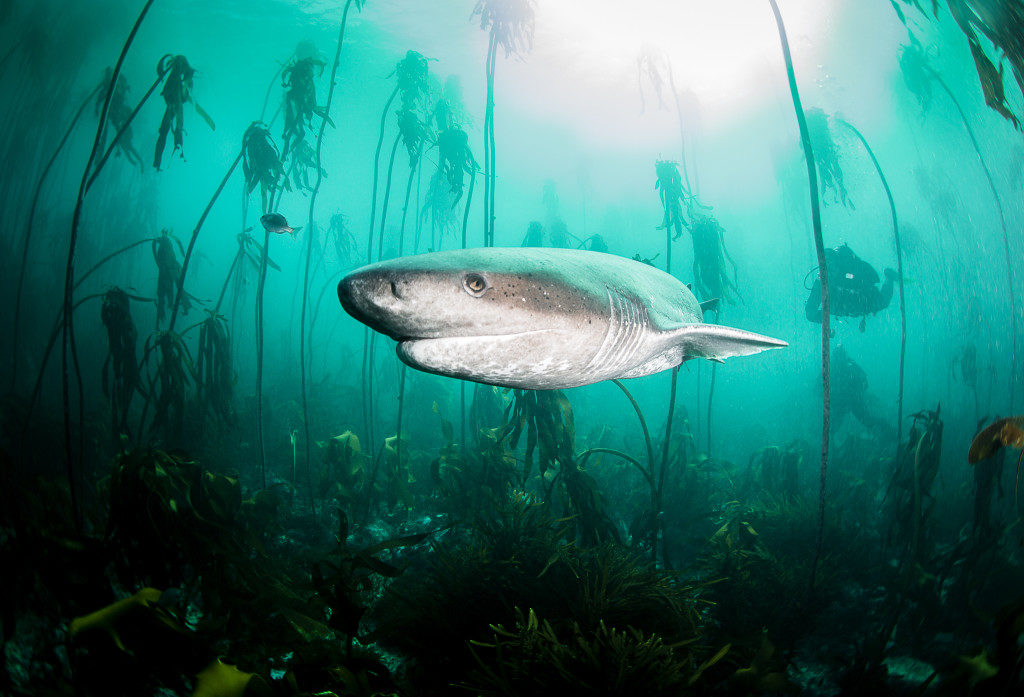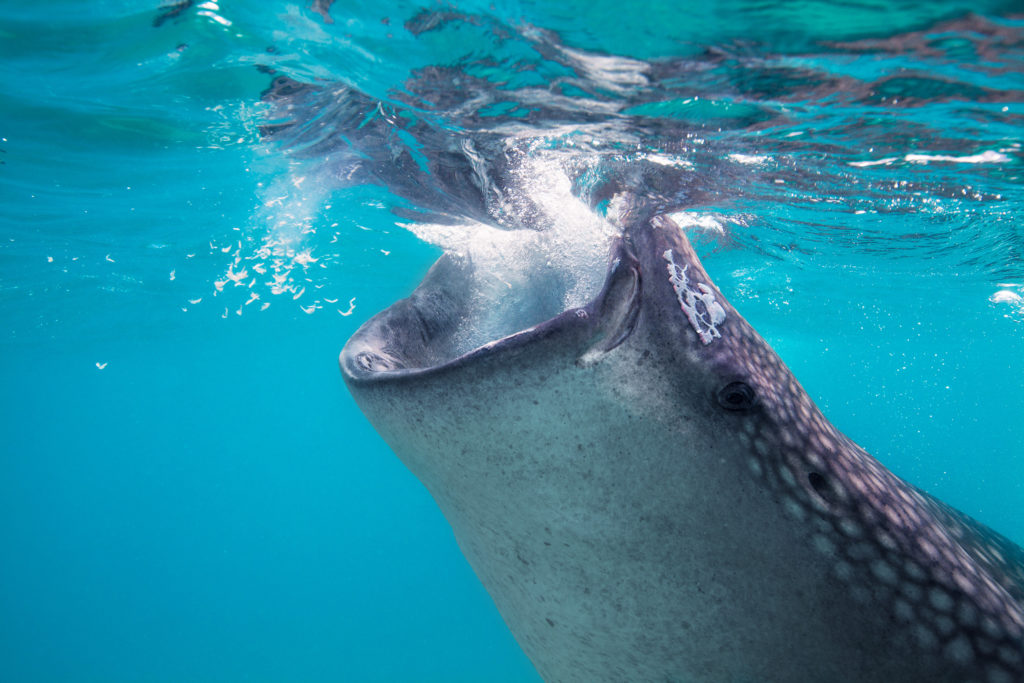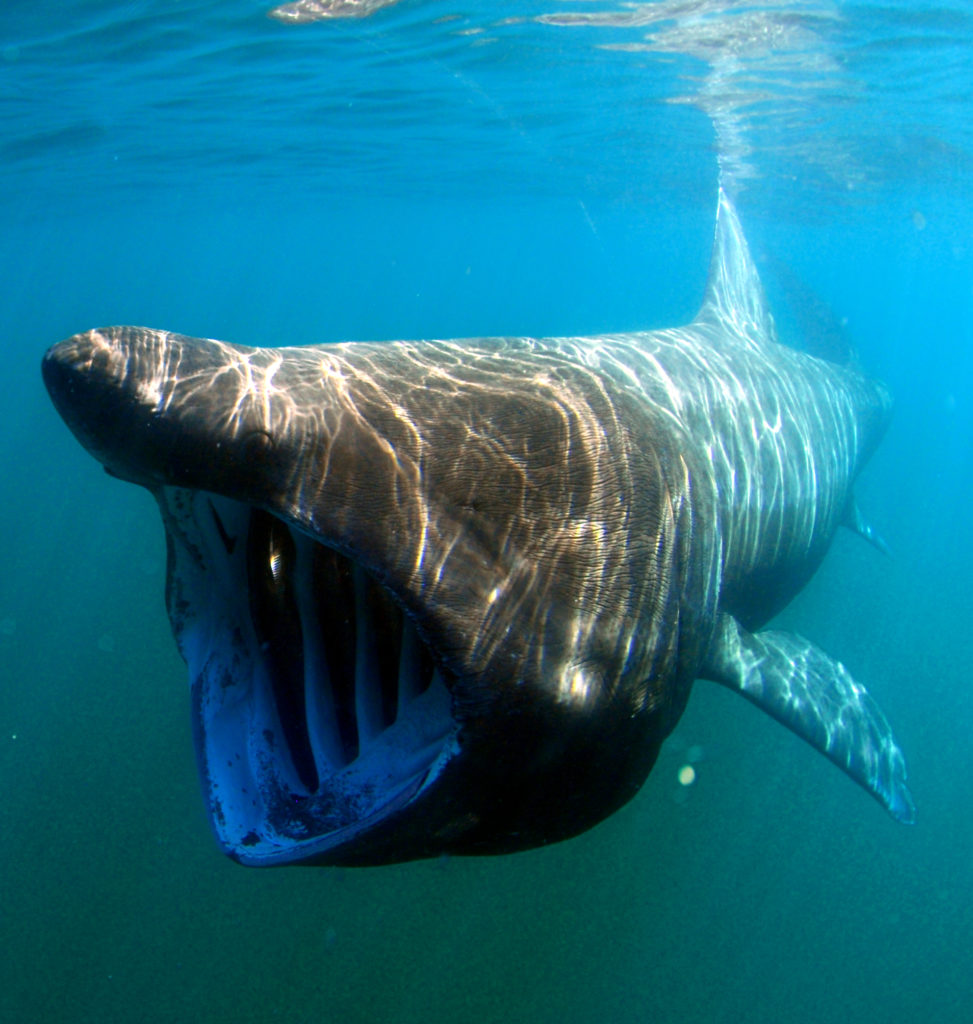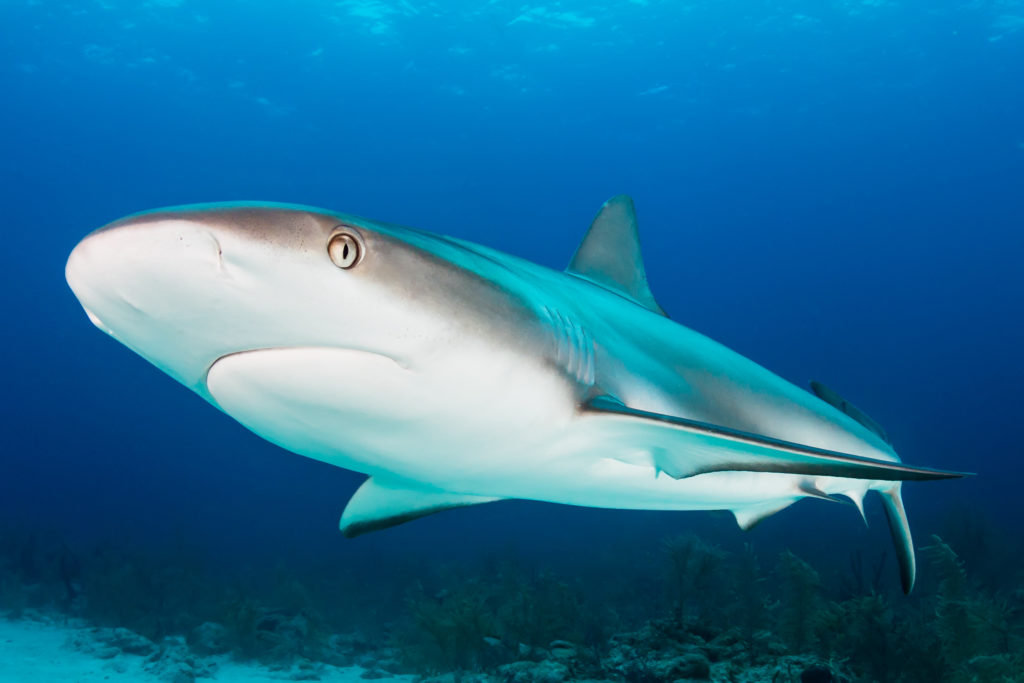Diving with sharks is at the top of nearly every diver’s must-do list. Some shark dives are suitable for novices, some for experienced divers, and some for both. What starts out as a one-off event can soon become a lifetime pursuit as the diversity of sharks becomes apparent. Here are five top shark dives for novices, although experienced divers will enjoy them as well.
Basking Sharks
Rather than one of the top shark dives for novices, this is a purely snorkel experience. You can find these gentle plankton feeders in the waters surrounding the U.K. during the summer months. These grayish-brown sharks are the second-largest living fish after the whale shark. Photographers often shoot them with their gigantic mouths agape as they filter the water for food. Since these are snorkeling excursions, participants won’t need prior dive experience. You will need to be comfortable in cold water between 50 to 60 F (10 to 16 C). You’ll want at least a 7 mm wetsuit with hood, booties and gloves; most operators rent exposure protection including drysuits.
Broadnose Sevengill Sharks

Part of the Hexanchidae, or cow shark family, broadnose sevengill sharks have large, thick bodies and broad heads. Most shark species have five gill slits, but members of this family can have six or seven, as the broadnose sevengill’s name suggests. Scientists consider members of this family to be the most primitive of modern sharks, as their skeletons most closely resemble those of ancient, extinct sharks.
They live in temperate waters in both the Atlantic and Pacific, including the sun-dappled kelp forests off South Africa’s Cape. Dives with these curious sharks are conducted at depths of only 20 to 40 feet (6 to 12 m), so novice divers are welcome. Because of their natural curiosity, these are un-baited dives, giving you the chance to observe the sharks in their natural environment. The water here is cold as well, however, between 50 to 68 F (10 to 20 C), so wear adequate exposure protection.
Whale Sharks

Snorkelers can see the world’s largest fish, the whale shark, in a number of locations around the world. One of the best spots for nearly guaranteed encounters is in the clear waters off Isla Mujeres, Mexico. A tiny island off Cancun in the Yucatan Peninsula, Isla attracts the sharks each year from June through September because of the millions of bonito eggs in the water, which the sharks eat. Perfectly harmless to snorkelers and divers, whale sharks can grow to 40 feet (12 m), although the ones in Isla are typically much smaller. It’s not unusual to see over 100 of them in the water at once in Isla Mujeres. There are lots of operators running the whale-shark excursions here; be sure to pick a reputable operator who follows environmental and interaction rules.
Great White Sharks
Counterintuitively, an interaction with this iconic shark is ideal for novice divers, particularly in South Africa, where the sharks eat mostly Cape fur seals. Operators attach cages to the side of the boat and outfit tour participants inside with either a snorkel or scuba hose. No other scuba equipment is required, nor is dive experience. Tours from False Bay typically run from February to September, and Gansbaai tours run year round. Family members who don’t want to get in the water can observe the sharks from the boat if they prefer. Unfortunately, the great white population in South Africa is in danger of extinction, so how much longer divers will be able to see them here is unknown.
Caribbean Reef Sharks
The most ubiquitous shark in the Caribbean, Caribbean reef sharks inhabit quite a few of the regions’ reefs. It’s not uncommon to see them cruising along a wall even on a relatively shallow dive. If you’re looking for a more focused encounter, there are a number of reputable operators in the Bahamas running baited shark dives. During these feeding frenzies, divers will descend to between 40 and 50 feet (12 to 15 m). They will remain kneeling on the sandy bottom while a trained shark-feeder doles out the afternoon snack. Not aggressive, they will nonetheless come close during the shark-feed. Prepare for a close-up encounter.




